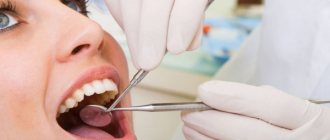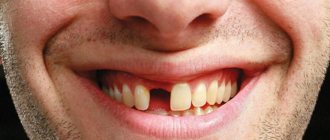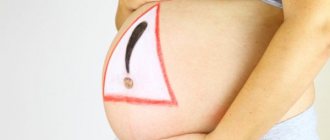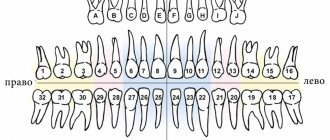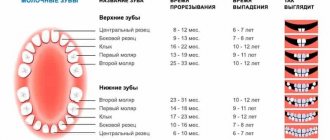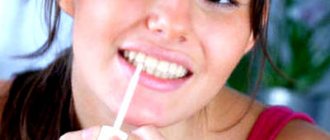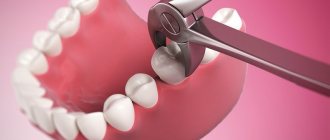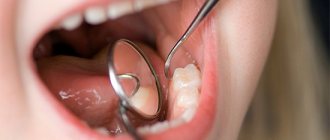Manifestations Causes Classification Diagnostics Treatment Prevention
Each of us wears out our teeth with age. Hard tissues shrink due to friction between surfaces and food. In most cases, this process is uniform, takes a lot of time and does not affect chewing function. This is a natural (physiological) loss of hard tissue. But sometimes the loss of enamel and dentin (the layer under the enamel) is so intense that they talk about pathological abrasion of teeth (abrasion). This process leads to physiological disorders and affects all aspects of life.
Physiology is to blame for everything
To begin with, let's say that all the causes of tooth wear can be divided into two large classes - physiological and pathological.
The first reason appears immediately after the final eruption of baby teeth - and this is a natural process. In children, the incisors, cusps on the canines and molars gradually wear away, and by the age of 6 years, the depth of wear down to the dentin can be observed. In the future, until the age of 14, when the teeth are finally replaced by permanent ones, abrasion of the dentinal layer of the first teeth is sometimes noted. Severe abrasion is diagnosed when the entire upper part of the tooth disappears or the cavity becomes visible.
In general, due to physiological characteristics, teeth adapt to stress during the process of wear. Without dangerous overloads, the work of the entire dental system is adjusted; contacts between teeth change the angle from point to plane, so that the closure of the jaws is more physiological.
If the changes affect only the enamel, there is nothing to worry about. But if dentin begins to participate in the process of abrasion, this is a reason to consult a doctor.
Patient examination plan
Traditionally, the examination begins with getting to know the patient, collecting anamnesis and complaints. At this stage, the doctor finds out when the disease began, how it manifests itself, what it may be associated with (the patient’s lifestyle, previous treatment, harmful occupational factors, etc.). If the problem has just begun to manifest itself, then complaints as such may be absent or only slightly expressed. Typically, patients note discomfort when eating hot and cold food, chipping of the enamel or its thinning, and changes in diction (in later stages of the disease).
At the next stage, the doctor proceeds to examine the oral cavity, during which he evaluates:
- Bite.
- Overlapping of incisors.
- The shape of the dentition.
- The shape of the teeth.
Based on the data obtained, the doctor can prescribe additional research methods (radiography, MRI, electroodontodiagnostics, etc.), as well as consultations with more specialized specialists.
How is pathology determined?
Only a specialist can detect a violation during tooth wear. Of course, the general picture among the population is taken as the norm, but the doctor also takes into account individual factors:
- general condition of the enamel;
- presence or absence of exposed dentin;
- work of the temporomandibular joint;
- condition of the mucous membranes of the tongue and cheeks;
- degree of severity of nasolabial folds;
- sensitivity of the masticatory muscles.
It is interesting that in addition to all the individual characteristics, the doctor is interested in the sound with which the jaws close. A sharp, clear and short sound indicates that there are no problems. A long-lasting sound accompanied by a squeak indicates deficiencies in the functioning of the TMJ or problems with the nervous system.
You can understand that teeth are subject to increased abrasion by the first sign - increased sensitivity. It is sharper when the upper hard layer of enamel is significantly abraded.
Increased tooth abrasion - causes
Factors that lead to pathological loss of hard tissue are divided into several groups:
- Inferiority of enamel and dentin
. As a result of genetic disorders, harmful effects on the fetus during pregnancy or metabolic disorders, the quality of dentin and enamel is reduced. If the balance of minerals is disturbed, the hard tissues of the tooth begin to wear away at an accelerated rate. - Uneven chewing load
. Incorrect bite, dental defects, bruxism, hypertonicity of the masticatory muscles lead to the fact that some teeth receive increased load. The ligamentous apparatus of the teeth stretches and weakens. It cannot provide height support to the lower part of the face. This leads to TMJ problems. - External factors
. Working with chemical elements and abrasive substances reduces the quality of enamel and dentin.
Modern and classic classification of abrasion
In modern Russian practice, the most widespread and popular is the Bushan classification of abrasion, which distinguishes:
✔
physiological abrasion (only enamel is affected);
✔
transitional (enamel + dentin suffers);
✔
pathological abrasion (dentin is damaged).
The benefit of the classification is that, in addition to the degree of pathology, it considers the surfaces (vertical, horizontal) that have undergone changes, the prevalence of the disease and the tooth sensitivity accompanying the process.
As for the types of pathological abrasion, the classical classification was developed by A. G. Moldovanov and L. M. Demner. According to their data, the rate of abrasion is 0.402 mm per year.
- The first degree of abrasion
is achieved by the age of 25-30 and is characterized by smoothing of the cusps and cutting edges of the teeth. - The second degree of abrasion
is observed in patients aged 44-50 years and is expressed in the abrasion of the enamel. - The third degree of abrasion
is noted if by the 50th anniversary the enamel limit has been reached and 10 pairs of chewing teeth have been preserved.
Treatment of tooth wear
What is tooth abrasion?
The loss of hard tooth tissue (enamel) during a person’s life is a normal process and is adaptive in nature, since our teeth are constantly in contact with each other. When chewing, the teeth adapt to various movements of the lower jaw, and upon contact, areas are formed that not only increase the chewing surface of the teeth, but also facilitate gliding. This significantly reduces the load on the temporomandibular joint. This natural abrasion of tooth enamel is called physiological.
What is pathological abrasion?
Pathological or increased abrasion
proceeds according to a different scenario.
The process ceases to be sluggish and the rapid loss of hard tooth tissues leads to a sharp decrease in the height of the tooth and the balance between its above and intraosseous parts is disrupted. In addition to tooth enamel, tooth dentin is also involved in the abrasion process. The chewing tubercles of the teeth quickly wear out and the teeth become flat “like a table,” which not only makes chewing difficult, but also speech function suffers, especially when the cutting edge of the anterior group of teeth wears off.
Pathological abrasion is always accompanied by discomfort for the patient:
- Reaction to temperature and chemical stimuli.
- The height of the lower third of the face decreases.
- The nasolabial folds become more pronounced.
- Dystrophic disorders in the temporomandibular joint (clicking).
- The appearance of pain in the joint when chewing.
- Chewing function decreases.
- The lower jaw moves posteriorly.
- The face takes on an senile expression.
- The volume of the oral cavity decreases and breathing problems appear.
- The person begins to stoop, and dystrophic disorders appear in the spine.
- And as a consequence, problems in the human nervous system, as well as the digestive, respiratory, and cardiovascular systems.
IMPORTANT:
According to various estimates, due to dysfunction and condition of the masticatory apparatus and the changes described above, a decrease in human life expectancy can occur by 15 years or more. Against this background, smoking becomes harmless entertainment.
What is the cause of pathological abrasion.
Functional inferiority of hard dental tissues
.
In this case, the process can be hereditary, congenital (disorders of amelo- and dentinogenesis) or acquired (metabolic disorders, dysfunction of the endocrine, vascular, nervous and other systems).
But the most common reason is excessive functional load on the tooth tissue.
This category of causes includes bite pathology, partial edentia (the absence of part of the teeth), malocclusion, the use of low-quality dentures, bruxism, errors in prosthetics of defects in the dentition, errors during filling carious cavities, “flat” fillings that do not in any way follow the shape of the chewing surface of the teeth. , chronic dental trauma (bad habits).
IMPORTANT: All these factors lead to irreparable consequences, in the form of pathology of the temporomandibular joint.
How it goes.
Like every disease, pathological abrasion varies:
By degree:
- I - abrasion of the enamel of the cutting edges and cusps of the tooth.
- II - Reduction by 1/3 of the length of the tooth crown.
- III – wear down 2/3 of the length of the tooth crown.
- VI – reduction of the tooth crown by more than 2/3.
The shape
is divided into horizontal, vertical and mixed. And in terms of extent, it can be local on several teeth or cover the entire dentition and be called generalized.
Consequences of pathological tooth wear.
Intensive loss of hard dental tissues leads not only to serious functional
disorders in the temporomandibular joint, but also to aesthetic problems.
- Loss of bite height not only negatively affects a person’s appearance, but also brings a number of problems when trying to put a filling on a tooth or carry out aesthetic restoration of teeth using veneers made of composite materials.
- It is not possible to install a crown or implantation at all.
- Dysfunction of the temporomandibular joint (TMJ)
interferes with proper chewing of food, speech formation, and all this is accompanied by pain and a “clicking” of the joint when opening or closing the mouth.
IMPORTANT:
A vicious circle arises that is very difficult to break. Functional overload in the absence of a number of teeth or malocclusion leads to pathological abrasion of the teeth, and this leads to an increase in the functional load necessary for chewing food, which contributes to even greater abrasion of the hard tissues of the teeth.
Methods for treating pathological abrasion.
Rehabilitation of patients is very long and requires a lot of experience and knowledge from the doctor. Only a doctor can be the first to diagnose the first signs of this disease when examining a patient. The treatment process can take more than one month and requires the patient to be patient and follow all the doctor’s recommendations. Depending on the degree and form of the disease, various treatment methods are used.
For I and II degrees
The main goal of treatment is to stabilize the process and prevent further progression of the process. For this purpose, inlays and crowns can be made on teeth. Modern composite materials, due to their high adhesion and strength, in some cases make it possible to save teeth, avoid pulp loss and achieve
long-term (5-10 years) therapeutic and aesthetic effect
using direct or indirect restoration (with Wax-up modeling)
. Orthodontic treatment is also carried out if necessary.
At stages III and IV
diseases, the height of the lower third of the face decreases and dysfunction of the temporomandibular joint is observed. The treatment takes place in stages, since the specialist faces two tasks simultaneously:
- Restoring the lost interalveolar height between the dentition allows you to normalize the functioning of the temporomandibular joint and relieve it from overload.
- Complete restoration of the anatomical shape of the teeth.
Treatment of abrasion in this case will be orthopedic.
Restoration of the bite height occurs when the patient wears a special joint splint, under the supervision of a doctor. During the adaptation period, temporary mouthguards and crowns are used, which allow the jaw to get used to the new position. The best option is a non-removable design, since a person will not have the opportunity to disrupt the healing process. Each stage can take a long time and during this time the patient must visit the dentist
, especially if any unpleasant sensations appear.
IMPORTANT:
The more serious the damage to the dental tissue and the longer the patient ignores it, the more difficult the treatment process is.
Diagnosis of increased tooth wear.
Diagnosis of increased tooth wear is based on patient complaints and the study of external
signs. Abnormalities can be detected by examining the teeth. Differential diagnosis is only required to distinguish physiological abrasion from pathological, localized from generalized form, as well as to determine the degree of pathology based on the height of the loss of hard tissues of the dental crowns, which is important when choosing treatment tactics. Pathological abrasion of individual teeth must be distinguished from traumatic lesions, caries and non-carious lesions, wedge-shaped defects, and erosion.
Excessive functional loads on tooth tissues provoke the occurrence of pathological abrasion. This category of reasons includes specific chewing of food, partial edentia (missing part of the teeth), malocclusion, the use of low-quality dentures, bruxism (TMJ dysfunction) or errors in fillings and prosthetics.
In this case, to obtain a complete picture, in addition to external examination, palpation of the masticatory muscles and the TMJ area, and corresponding measurements, plaster models of the jaws are studied, and hardware studies, electroodontodiagnosis, radiography, tomography of the TMJ, and electromyography of the masticatory muscles are also carried out.
Restoration of worn teeth.
Despite the fact that increased abrasion is quite easily diagnosed, eliminating
existing disorders is a complex process, which is associated with a variety of reasons causing the development of these pathological signs. The choice of the most appropriate tactics for dental restoration is carried out in each case in accordance with the individual characteristics, stage and nature of the lesion, and its causes.
It will be possible to quickly restore areas of increased tooth sensitivity, as well as the aesthetics of the anterior zone, with the help of composite materials. Restoration of worn teeth
can be carried out using modern high-strength microhybrid light materials and through prosthetics. When making prosthetics, it is optimal to use ceramic inlays or crowns for these purposes, which significantly increases the cost of treatment. Total prosthetics with expensive zirconium dioxide structures are not always justified for such pathology and are an excessive procedure. Such designs may be relevant if tooth wear is accompanied by other orthopedic problems or the patient is contraindicated for implantation.
Service cost.
Prices for treatment in our clinic
justified and justified. Our patients appreciate the professionalism of our specialists, the durability of the restorations, and the excellent external aesthetics of all work. But the most important thing in the doctor’s work is the preservation of the functional characteristics of the dental system, 100% elimination of pain and discomfort. We place high demands on the quality of work and set strict internal standards.
The cost of treating pathological tooth abrasion depends on the degree of development of the process and the methods used (therapeutic or orthopedic). Generalized tooth abrasion, affecting all teeth at once, requires an integrated approach and systemic action. A local problem, as a rule, can be eliminated in 1 visit. It is important to identify the causes of increased tooth wear. Elimination of the provoking factor will avoid relapse in the future.
Causes of pathological abrasion
There are several main reasons for the development of abrasion pathology, and in the first place among them are bad human habits. For example, the habit of gnawing seeds, holding small objects in the mouth (pins, cloves, pipe mouthpiece), love for foods with high acidity may well become catalysts for the process.
Often the cause of increased abrasion is diseases: bruxism, diseases of the gastrointestinal tract, nervous, cardiovascular, endocrine systems, from the side of the TMJ - malocclusion. The cause may also be improper dental treatment - an incorrectly manufactured orthopedic design can provoke severe abrasion of the antagonist tooth.
Sometimes the cause of pathology may be the chosen profession. Some employees of the metallurgical, cement, granite industries, and representatives of the mining workshop suffer from increased abrasion.
Crown as a way out
Pathological tooth wear can be eliminated with the help of crowns. They can be installed both on the front teeth and on the chewing teeth and restore the aesthetics and functionality of the oral cavity. Crowns can be made from various materials, each of which has its own advantages and disadvantages:
| Material | pros | Minuses |
| Metal ceramics | Durability, high aesthetic qualities, not the highest price | Depulpation of the tooth and grinding of a large amount of hard tissue are required. |
| Metal-free ceramics | The best aesthetics that are not lost over time, high strength, durability. | High price. |
| Metal | High strength, durability, low cost. | Lack of aesthetic qualities. |
When choosing a certain material, the patient must understand that he will need to replace a large number of crowns (perhaps even all). Therefore, it is worth giving preference to those materials that have good aesthetic qualities and a long service life.
After all the nuances of prosthetics have been agreed upon, we proceed directly to the procedure itself. At the first stage, the oral cavity is sanitized and teeth are prepared for crowns. Next, the doctor takes impressions of the jaws, based on which the dental technician makes a prosthesis. These operations may take some time, so the patient may be offered temporary plastic crowns. They will protect prepared teeth from the aggressive environment of the oral cavity and help adapt to new teeth. After the final version of the prosthesis is ready, it is tried on again and fixed with permanent cement.
Why does the enamel on teeth wear off?
Scientists identify several reasons:
- Bad habits - biting pencils and nails, alcohol and nicotine;
- Straight bite;
- Sharp closing of the jaws during stress, bruxism;
- Violation of metabolic processes;
- Work in hazardous industries - in the field of metallurgy, in coal mining, in confectionery shops;
- Using brushes with hard bristles;
- Inappropriate bleaching;
- Culinary preferences (hot tea with ice cream, for example).
PROMOTION
Hygienic teeth cleaning
2000 rub.
Enamel has worn off, teeth hurt – what to do?
Seek help from a dentist and begin treatment. Various methods and drugs are used to eliminate the problem. It is impossible to restore the enamel, but the use of drugs will make it harder and protect it from further destruction. Scientists are working to create drugs that can restore worn enamel. The implementation of this task will be a truly great discovery.
